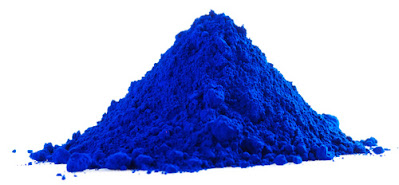Was Ultramarine Blue Expensive?
Yes, historically, Ultramarine Blue was one of the most expensive pigments used in art due to the
labor-intensive process of extracting and preparing the pigment. The original
source of ultramarine blue was the mineral lapis lazuli, which had to be mined
primarily in Afghanistan. Extracting the vibrant blue pigment from lapis lazuli
required meticulous grinding and purification, which made it a time-consuming and
resource-intensive process.
Because of its rarity and the
effort involved in its production, ultramarine blue was often reserved for use
in the finest artworks and was considered a symbol of wealth and prestige. It
was frequently used in religious paintings, particularly in depictions of the
Virgin Mary's blue robe.
Over time, alternative
synthetic methods for producing ultramarine blue were developed, which brought
down the cost and made the pigment more accessible. Despite this, historically,
ultramarine blue was indeed an expensive and prized color in the world of art.
Is ultramarine a purple blue?
No, ultramarine blue is not a
purple-blue color; it is a true blue color with no significant purple
undertones. It is a vivid and deep blue hue, often described as a rich and
intense shade of blue, resembling the color of the lapis lazuli gemstone. The
name "ultramarine" comes from the Latin words "ultra"
(beyond) and "marinus" (sea), referring to the fact that the pigment
was originally sourced from a rare blue mineral found beyond the sea.
Purple-blue colors would have more of a blend of blue and purple, leaning towards the purple side of the color spectrum. Ultramarine blue is distinctively blue and does not have a strong presence of purple in its composition.
Visit at :- https://medium.com/@seo.ultramarinebluepigment/what-colour-is-ultramarine-blue-960ecb77fc5




Comments
Post a Comment